- About MAA
- Membership
- MAA Publications
- Periodicals
- Blogs
- MAA Book Series
- MAA Press (an imprint of the AMS)
- MAA Notes
- MAA Reviews
- Mathematical Communication
- Information for Libraries
- Author Resources
- Advertise with MAA
- Meetings
- Competitions
- Programs
- Communities
- MAA Sections
- SIGMAA
- MAA Connect
- Students
- MAA Awards
- Awards Booklets
- Writing Awards
- Teaching Awards
- Service Awards
- Research Awards
- Lecture Awards
- Putnam Competition Individual and Team Winners
- D. E. Shaw Group AMC 8 Awards & Certificates
- Maryam Mirzakhani AMC 10 A Awards & Certificates
- Two Sigma AMC 10 B Awards & Certificates
- Jane Street AMC 12 A Awards & Certificates
- Akamai AMC 12 B Awards & Certificates
- High School Teachers
- News
You are here
Mathematical Treasures - William Emerson's Treatise of Algebra
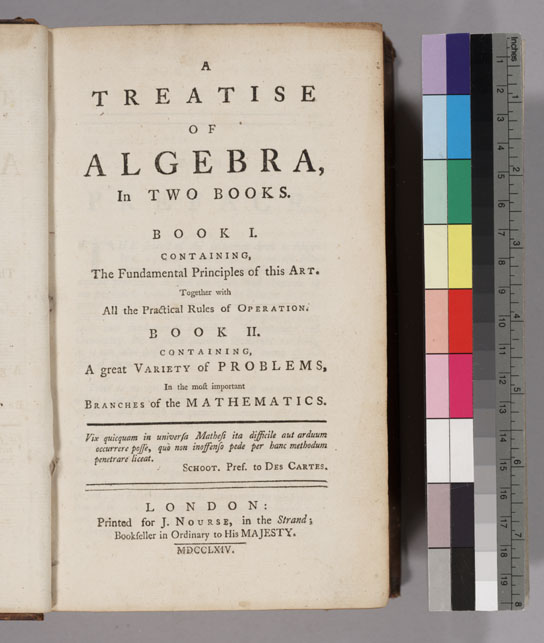
This is the title page of the Treatise of Algebra (1764) by William Emerson (1701 - 1782). Emerson was a prolific writer on mathematical subjects, including works on fluxions, trigonometry, and mechanics.
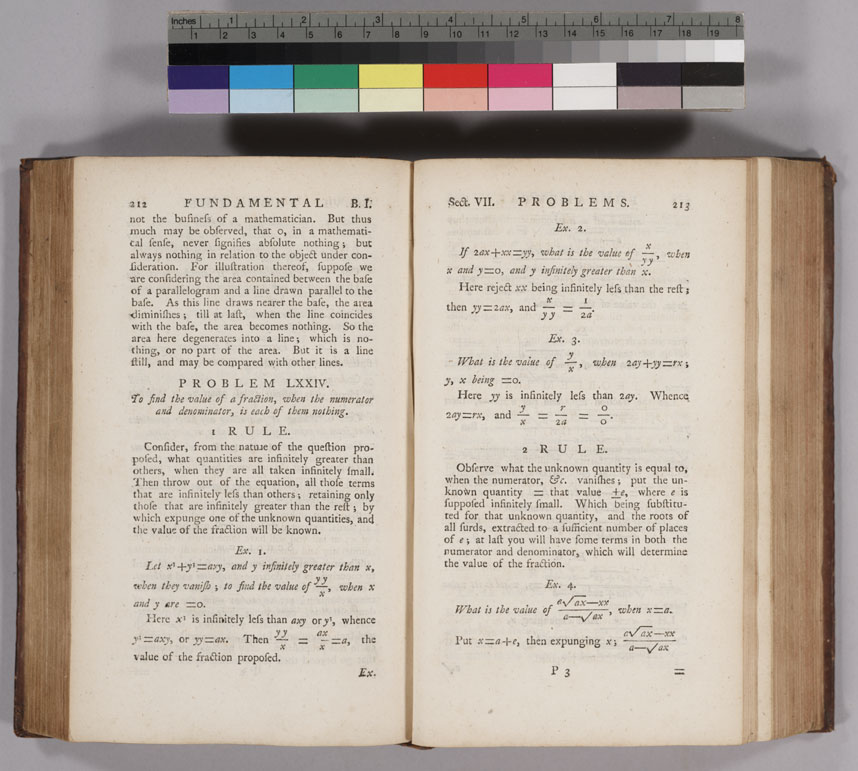
On pages 212-213, Emerson discusses the question of the value of a fraction x/y assuming both numerator and denominator vanish. Emerson treats this as an algebra problem, although, since he had written on the topic of fluxions, he understood that calculation of the values of such fractions was based on some notion of limit, even if that was only imperfectly understood.
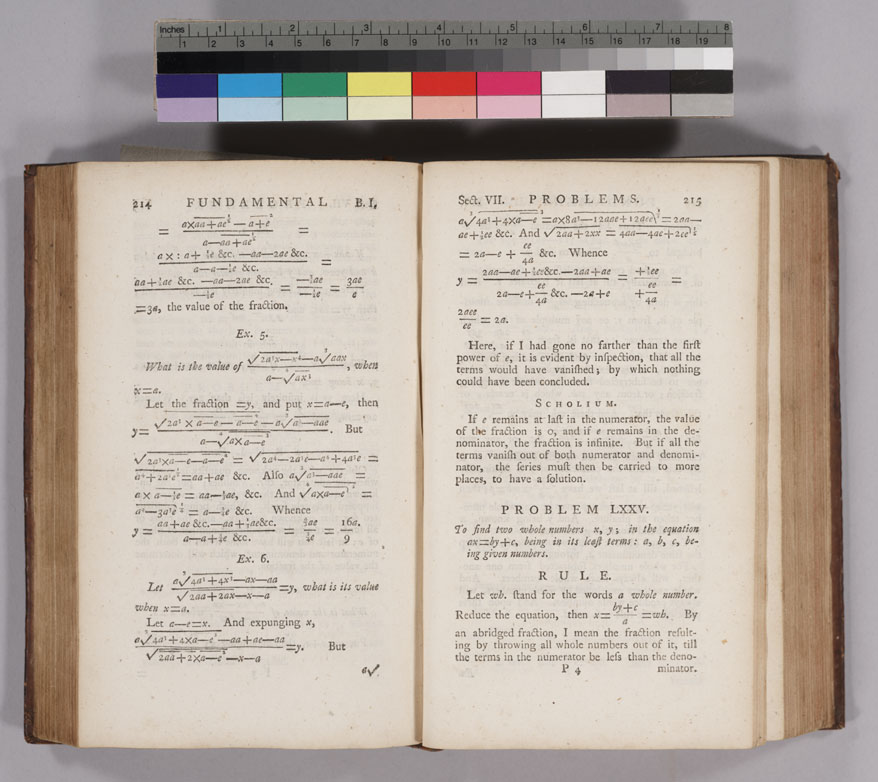
On pages 214-215, Emerson continues the discussion of the values of fractions. Note that example 5 is taken directly from l'Hospital's Analyse des Infiniment Petits. In fact, the example was originally given to L'Hospital by Jacob Bernoulli and is the first example in L'Hospital's text of what we now know l'Hospital's rule.
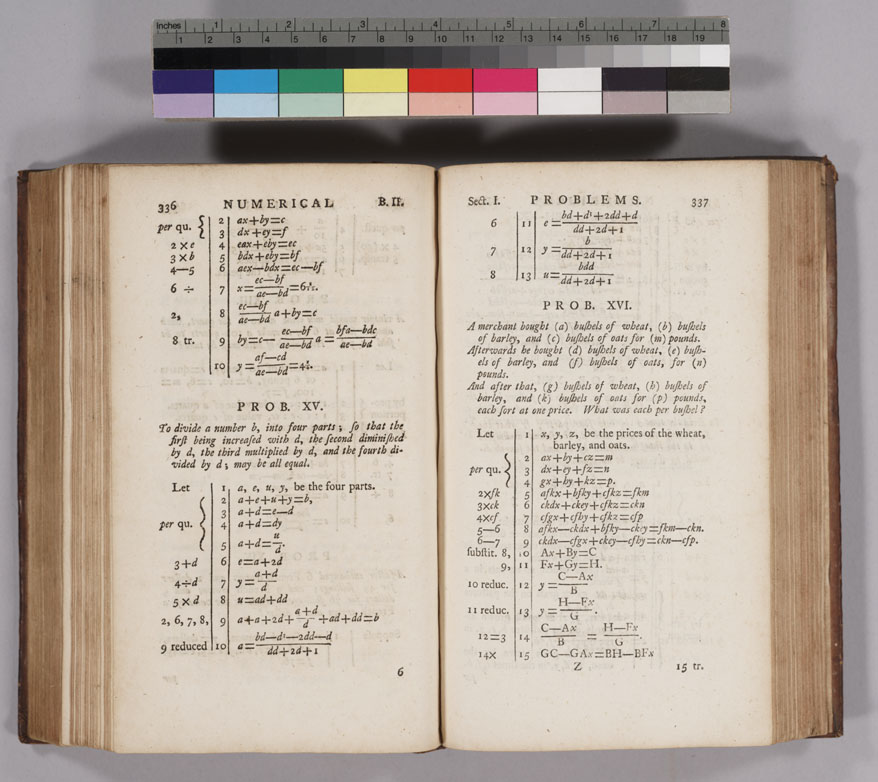
On pages 336-337, we see how Emerson explained the solution of some algebra problems, showing his readers the step by step approach to solving these.
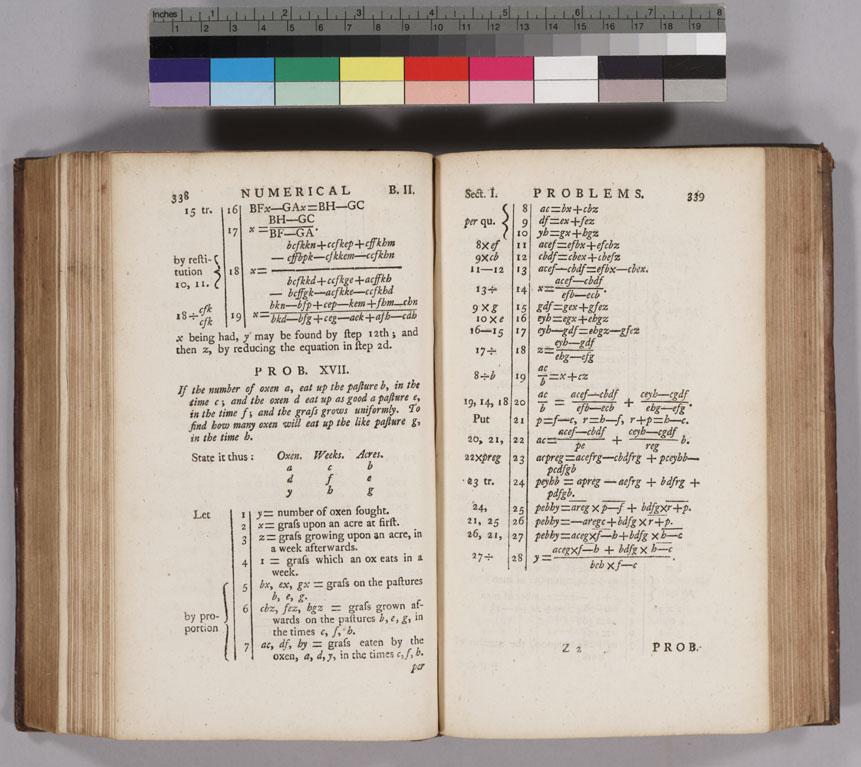
On pages 338-339, Emerson presents the general problem of oxen eating grass, where the grass continues to grow. A specific example of this problem was given by Isaac Newton in his Arithmetica Universalis, first published in 1707.
Frank J. Swetz and Victor J. Katz, "Mathematical Treasures - William Emerson's Treatise of Algebra," Convergence (January 2011)




